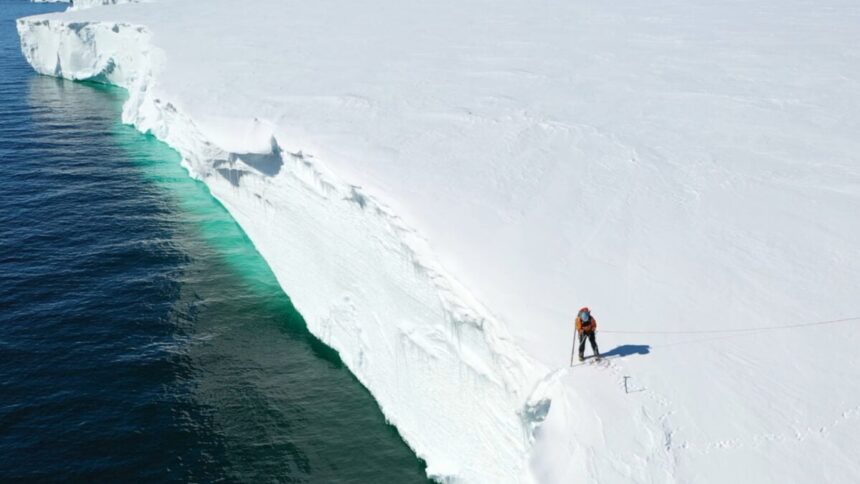In 2021, researchers in Antarctica noticed giant cracks developing on the Brunt Ice Shelf, an enormous stretch of ice on the continent’s northwestern corner. Two years later, the fracture grew so large that a gigantic iceberg almost twice the size of New York City broke free in a process called calving, sending scientists scrambling to investigate the icy chunk, which they named iceberg A-81.
A team of researchers affiliated with the British Antarctic Survey sought to understand the forces driving this “crack behavior” in the huge ice shelf. By devising a mathematical model to account for natural forces affecting ice shelves, the researchers found that iceberg A-81—and most other icebergs, for that matter—likely snapped off from tidal forces buffeting the ice shelves in spring, when the currents are strongest.
The paper, published in Nature Communications on July 24, supports common-sense assumptions about environmental forces playing a major role in driving calving events, but the proposed model could also improve prediction models for calving events, a historically challenging task.
“Understanding what controls the timing of these events is crucial, because calving not only affects the shape and melt rate of ice shelves but also their long-term stability,” said study lead author Oliver Marsh, in a statement. “It’s incredibly exciting to uncover a link between something as predictable as the tides and the dramatic, sudden process of iceberg calving.”
For the paper, Marsh and his colleagues first devised a mathematical model to calculate the threshold for crack behavior in the ice shelves using ocean tides or wind patterns as potential stressors. Next, they tested their predictions against GPS and radar data, paying close attention to the subtle movements and stresses that appeared within the ice shelf over time. They noticed that the fractures tended to grow most in spring, which happens to be when tides are strongest.
The model, however, is a simplified interpretation of real-life dynamics in Antarctica, the study authors admitted, and it better explains smaller, gradual changes in crack behavior. This means that more dramatic events—like extreme temperatures from climate change—will cause even bigger rifts in the ice. “Tides and wind are key to the timing of small individual rift growth events here,” the authors wrote in the paper, “but it is notable that an iceberg collision in 2021 caused more substantial rift growth in a single event than throughout 2020.”
Nevertheless, the study marks a crucial step in modeling the role of environmental drivers in calving events, which the authors argue will subsequently inform our models of iceberg calving under such extreme atmospheric or ocean conditions. Large icebergs also influence ocean circulation and local ecosystems, so the new model could serve as a useful tool for structuring research projects in Antarctica, Marsh explained.
“Icebergs like A-81 can be thousands of square kilometers in size and account for roughly half of all ice lost from Antarctica each year,” Marsh said. “This kind of insight brings us closer to forecasting major ice loss events and their impact on sea level with far greater precision.”
Read the full article here












